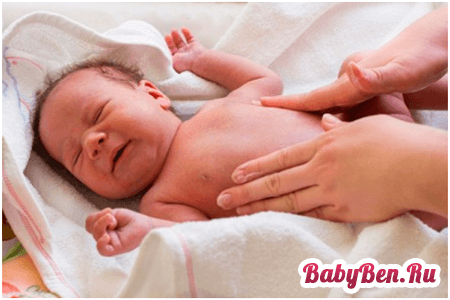
Dysbiosis is a disease caused by an imbalance of intestinal microflora, when the level of useful lactocultures decrease, and the number of pathogenic microorganisms increases sharply. Dysbacteriosis is characterized by the absence of characteristic symptoms, and in this regard, every mother is worried about how to recognize in time and how to treat dysbiosis in newborns. In most cases, dysbiosis of newborns is due to the fact that the baby was late for the mother’s breast.

The content of the article
What are the main causes of dysbiosis
Before answering the question of how to treat dysbiosis in newborns, you need to understand the causes that cause it. As a rule, the following factors provoke this disease:
- Too later, the baby’s attachment to the mother’s breast. In a newborn intestine is sterile, and microorganisms populate it immediately after birth. Mother's milk contains all the necessary, beneficial substances and sour -milk crops, thereby contributing to normal microflora. The delay in applying to the chest leads to the settlement in the intestines of unusual bacteria, which leads to dysbiosis.
- The use of antibiotics is either the most nursing mother or child. Antibiotics affect both pathogenic and beneficial bacteria for a child.
- Chronic and acute inflammation. At the same time, conditionally pathogenic microorganisms multiply and cause dysbiosis.
- Hlybon invasion can cause diarrhea, flatulence and dysbiosis.
- Rotavirus infection also contributes to the imbalance of intestinal microflora.

Symptoms of dysbiosis in newborns
As a rule, dysbiosis is manifested by some symptoms:
- diarrhea with the release of feces of yellow-green color and a fetid smell;
- increased regulations, the appearance of unpleasant odor from the mouth;
- bloating, flatulence, rumbling in the abdomen;
- reducing appetite, rejection of the chest, the absorption of milk in the intestine is disturbed, leading to the loss of the baby's weight.
Treatment of dysbiosis in newborns
The process of treatment of dysbiosis in newborns includes several stages.
- The baby is reorganized by the intestines in which harmful microflora is removed.
- If the disease is caused by a fungus, antifungal antibiotics are used, if the infection is bacterial, bacteriophages are prescribed, and if dysbiosis is caused by staphylococcus - chlorophyllipt.
- Other foci of infection are eliminated.
- Preparations are used to correct digestive processes - pancreatin, Mesim.
- Harmful substances are excreted from the baby’s body, for which enterosorbents of the Enterosgel, Enterodesis, and Smects are prescribed.
- Further, the newborn baby switches to food that contains intestinal lactocultures. It is possible to treat dysbiosis in newborns with the use of such drugs - acipola, bifidumbacterin.
- In order to develop useful bacteria in the future in the baby’s intestines, it is prescribed prebiotics for a period of 2 weeks and longer.

In response to the question of how to treat dysbiosis in newborns, the main place belongs to the baby’s nutrition with mother's milk. Otherwise, the symptoms of the disease may increase, and the abolition of breastfeeding is carried out only when the pathogens of the disease are detected in it.
